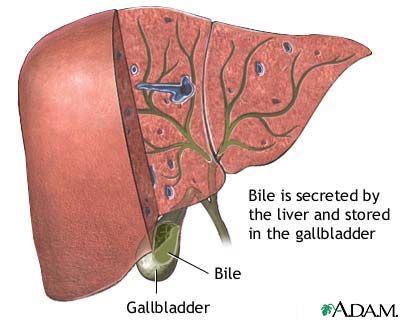Definition
Biliary atresia is a blockage in the tubes (ducts) that carry a liquid called bile from the liver to the gallbladder. The condition is congenital, which means it is present from birth.
Overview, Causes, & Risk Factors
Biliary atresia occurs when the bile ducts inside or outside the liver do not develop normally. It is not known why the biliary system fails to develop normally.
The bile ducts help remove waste from the liver and carry salts that help the small intestine break down (digest) fat.
In babies with biliary atresia, bile flow from the liver to the gallbladder is blocked. This can lead to liver damage and cirrhosis of the liver, which is deadly if not treated.
Pictures & Images
Bile produced in the liver
The biliary organs and duct system that creates, transports, stores, and releases bile into the duodenum for digestion includes the liver, gallbladder, and bile ducts (named the cystic, hepatic, common, and pancreatic duct).
-
Biliary atresia : Overview, Causes, & Risk Factors
-
Biliary atresia : Symptoms & Signs, Diagnosis & Tests
-
Biliary atresia : Treatment



Review Date : 11/2/2009
Reviewed By : Neil K. Kaneshiro, MD, MHA, Clinical Assistant Professor of Pediatrics, University of Washington School of Medicine. Also reviewed by David Zieve, MD, MHA, Medical Director, A.D.A.M., Inc.
